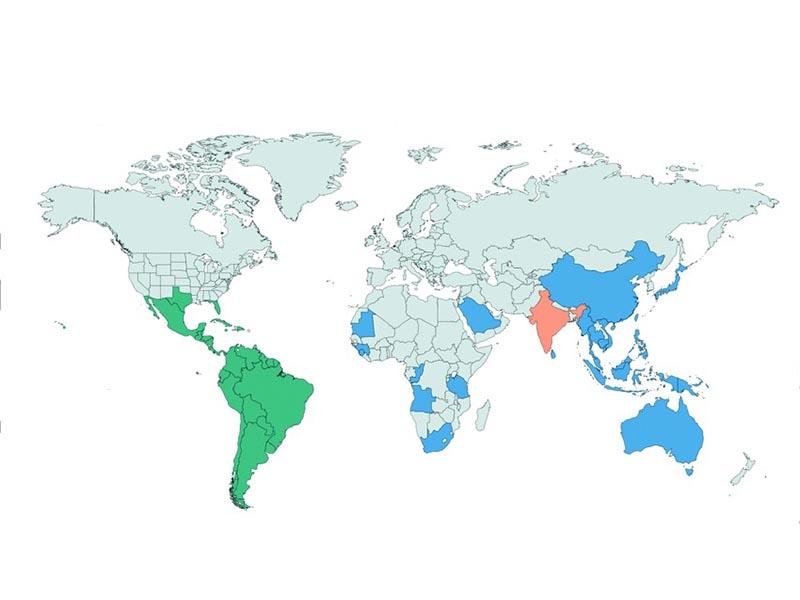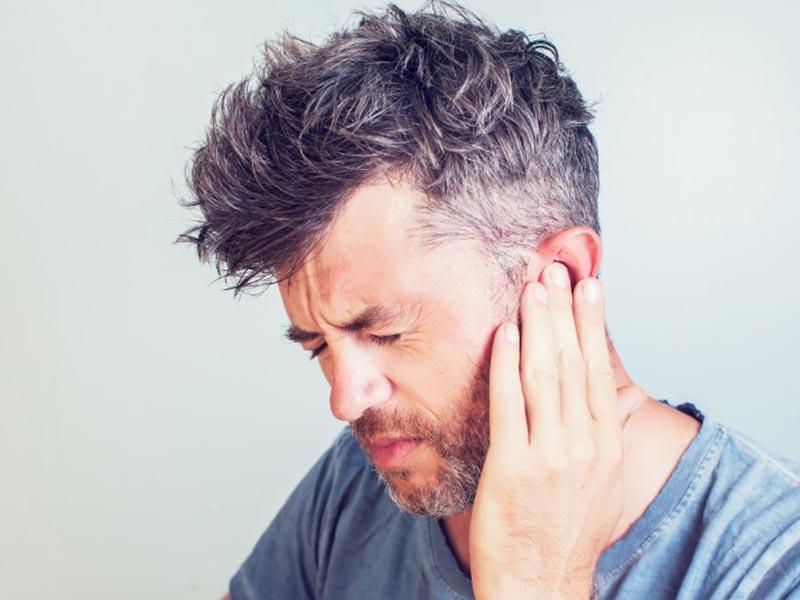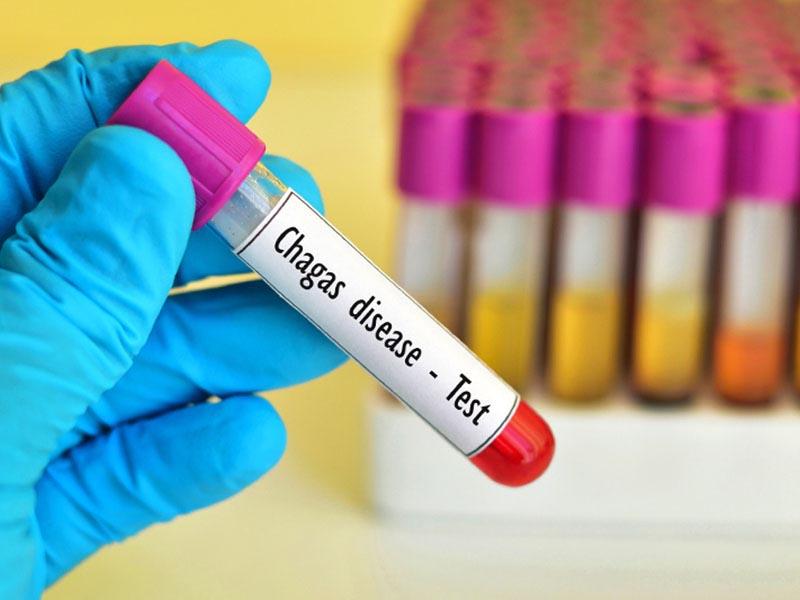
Кроме того, знакомый, который как раз вернулся из Америки, рассказывал об этих клопах. Они переносят опасной болезни – Шагаса. Хочется избежать встречи с этим клопом. Но боюсь, что не получится застраховаться от подобных неприятностей. Эти насекомые имеют возможность забираться в любые щели, т. к. они плоские. Хочу попросить вас максимально развеять мои страхи. Расскажите, пожалуйста, где обычно прячутся эти насекомые, как защититься от них. Заранее спасибо, София.
The author of the portal answers the question:
In my material below, I will discuss the triatomine bug, its characteristics, and ways to protect yourself from its bites.
Triatomine bug: habitat and characteristics
The insects prefer warm climates. For this reason, they are found mainly in Central South America. Individual species are found in remote areas of Australia, Africa and Asia. The insects have received unofficial (folk) names: "affectionate killer", "kissing bug".
This is due to the fact that they make an inconspicuous bite that can lead to death.
The insects traumatize the mucous membrane in the corners of the lips, which contributed to obtaining such an unusual name.
The pests have significant differences from their non-hazardous counterparts in other families. There are about 130 species of bed bugs. Representatives of each of them have individual characteristics. But note the common features as well. Triatomine bugs are characterized by external features:
- body length - up to 3.5 cm;
- 3 pairs of limbs;
- The coloration is most often brown, some individuals have orange front wings, others have red stripes, and black pests are also found;
- the head is cone-shaped;
- there are larger eyes on the sides;
- The proboscis of the mouthparts is long and strong, allowing the insect to pierce even the tougher outer covers of animals;
- the body closer to the posterior end is enlarged, due to which it acquires a pear-shaped form;
- limbs smooth, villi, spinules absent.

Habitats of the kissing bug
The pest can be found in the United States, Mexico, and exotic countries.
However, there are known cases of its solitary appearance in Eurasia, but the insect does not get there purposefully, but accidentally - together with the belongings of travelers.
Countries where the risk of contact with the pest is highest are noted:
- Ecuador;
- Salvador;
- Brazil;
- Belize;
- Argentina;
- Colombia;
- Bolivia;
- Costa Rica;
- French Guiana;
- Panama;
- Paraguay;
- Peru;
- Suriname;
- Guatemala;
- Mexico;
- Honduras;
- Nicaragua;
- Venezuela.

How to tell the kissing bug apart
The pest has a number of characteristic features that are unique to it. This allows you to quickly orient yourself when encountering insects. Triatom bugs stand out from the others. The main features are:
- Body shape: many bed bugs of other species have an oval body, broad enough with a small roller on the pronotum, which makes the insect look like a shield; there are also such pests that have a bridge that divides the body into two parts, while the triatom pest has a solid, narrow body;
- The head is elongated and has a powerful proboscis;
- absence of lint on the body;
- kissing bugs are often found with bright outer covers (with patterns of red-black, red-orange colors), but there are also inconspicuous individuals (brown shades).

What insects are most often confused with kissing bugs
Despite the pronounced differences, some people are still unsure exactly who is in front of them when they encounter this dangerous pest. It is necessary to compare it with individuals of the most similar species in appearance:
- Bed parasites. Their body size is much smaller, up to 8 mm, the body is segmented, there are 3 pairs of limbs and 1 pair of antennae. The mouthparts are less powerful and the head is rounded. The outer covers are transparent and their color varies from light brown to black and red (after ingestion). Such insects live near human sleeping place, they do not crawl outdoors purposefully.
- Maple American beetles. The triatomine bug has more similar features to them. But the body of the beetle is smaller than that of the kissing pest, the eyes are distinctly red, and the head is rounded. The body of such an insect is also flat, but the central part is recessed relative to the edges. The coloration and pattern of the outer covers are also different. They are herbivorous, but can be found in human homes. Only they come there to keep warm during temperature changes outside.
- Wheel bugs are predators, destroying various insects. Triatom bugs look similar to them: body shape, coloration. However, the wheel beetles have a significant difference - a comb-shaped outgrowth on the head, the body. It is located longitudinally. Thiatom insects have no such feature, the back is smooth. The coloration of pests of both species is dark.
- The rhomboid is a type of bedbug. It is similar to the triatomine bug in body shape and coloration. However, the rhomboid has a small protrusion on its back near the pronotum. In addition, the triatomine bug is known for its narrow, long head. The rhombovid has a rounded head that protrudes directly from the pronotum.
- Edges. The main similarities are: length of body; flat dorsum. However, hind limbs of Ctenichneumon are strongly thickened, which will not allow to take it for a triatomous pest at closer examination.
- Shieldman. This is another species of bedbug, it is distinguished by its average body size of up to 13 mm (determined by the insect species). However, the pest resembles a triatomine insect in its body shape, coloration (brown).

Developmental stages, reproduction and life cycle of the kissing bug
Such pests go through several stages of formation:
- Egg;
- young specimens;
- imago (sexually mature individual).
Pests of this species skip the pupation stage, which means that they belong to insects with an incomplete transformation cycle.
The duration of development inside the egg is 1-3 weeks, which is determined by environmental conditions. For example, in a more comfortable (warmer) climate the insects develop faster.
Larvae of the first instar barely reach 2 mm. They develop slowly - in 5 stages. At each stage, the young individual undergoes a molt. The duration of transition is on average 2 weeks. It is noteworthy that at the initial stage of development, the bedbug has no wings. They appear closer to the transition to the last stage of development. Such pests live an average of 2 years.

How to know if a kissing bug has settled nearby
First they discover bites on the body. Moreover, such insects make several punctures of external coverings in one meal. This ability is acquired by individuals during development (larvae of the last instars), as well as adults (bite 2 times).
The kissing bug is found in shelters near a person's sleeping area, as it is easier for them to reach the victim.
They hide under a pillow or mattress. Another sign is the appearance of small red or darker spots on the laundry. These are traces of insect activity.

What to do if you find a kissing bug in your home
It is important to prevent contact with such a pest in time.
The kissing bug is able to fly, it can take to the air at the slightest threat.
It is impossible to predict the trajectory of the insect. To avoid accidental collision with it, you should act slowly and carefully. If such a pest appears in sight, you should put it in a hermetically sealed container. But on no account should you take the bedbug with your hands without protective equipment. If possible, wear gloves made of thick material, for example, garden rubber gloves will do.
It is advisable to take the insect to a special service. This will allow you to check if the bug is infected. Such insects carry the dangerous Chagas disease, also called trypanosomiasis. To reduce the risk of infection (if the insect really is a carrier of harmful microorganisms), you need to treat the surface where the bed bug was, aggressive cleaning products, for example, Domestos, Belizna is suitable.

Danger of kissing bugs to humans
Pests provoke the development of allergies to an enzyme injected into the bloodstream when bitten. Approximately 7% of victims find themselves with the characteristic symptoms. However, there is a more significant danger - the development of Chagas disease or American trypanosomiasis. This is an infectious disease. It is provoked by protozoa - Trypanosoma cruzi (Latin name), a relative of African protozoa, which causes sleeping sickness. They enter the body in different ways, including blood transfusions. Often such single-celled protozoa are spread through bedbugs.
The danger to humans lies in the high risks of affecting various organs and systems. However, not all infected people develop symptoms. Many people are carriers of unicellular organisms, but are not aware of it. In severe cases (when the disease is neglected), complications develop that are difficult to eliminate. In this case there are changes in the tissue structure, which are irreversible, which means that it is impossible to restore the original properties of these organs. Surgery may be required to treat the complications, but this does not always help the patient to survive.

Photo Gallery: Triatomine bugs - vectors of Chagas disease



Symptoms of Chagas disease infection
The incubation period lasts 1-3 weeks, rarely up to 7-8 weeks. At the same time, there are no symptoms. Chagas disease develops in stages. Acute and chronic forms are distinguished.
Each of them differs in the severity of the patient's condition.

Acute phase
People with hypersensitivity develop complications after the end of the incubation period:
- temperature up to 39-40°C;
- body aches and pains;
- soreness in the muscles;
- rash;
- Swelling of certain areas that are affected, often with puffiness of the face, swollen eyes, lips, nose - depends on where the bedbug killer bit;
- swelling of the lower extremities;
- lymphadenitis;
- Children develop meningoencephalitis, which leads to rapid death;
- The cardiovascular system is disturbed, with inflammation of the heart muscle tissues, and enlarged heart chambers;
- the nervous system is affected.

Chronic phase
In this case, the signs appear only after irreversible changes have occurred in the body.
Chagas disease develops at this stage for a long time - sometimes up to several decades.
Signs may be weakly manifested. In this case, irreversible processes develop in the body:
- the ventricles of the heart are enlarged;
- intestinal obstruction against the background of the overgrowth of its sections is noted, other organs of the digestive tract may also change;
- The spleen and liver are affected, leading to nonspecific symptoms.

Table: Characteristic signs and symptoms of Chagas disease at different stages
The occurrence of certain manifestations is not always suggestive of a pathological condition. The table below summarizes the symptoms that characterize Chagas disease at different stages.
| Speed of development | First 1-2 months | 5-10 years after infections |
|---|---|---|
| Symptoms | fever; body temperature rises to 40°C; weakness; muscle pain; enlargement of some organs: so far, Chagas disease affects the spleen, liver; pallor of the outer skin; vomiting; stool disorders (no defecation in obstruction); diarrhea. | signs of heart failure: abnormal heart rate, shortness of breath, chest pain, discoloration of fingertips and nasolabial triangle (blue tint); fainting; abdominal pain; dizziness; headaches; swollen limbs; poor appetite. |

Diagnosis of trypanosomiasis
When the acute form of the disease develops, there are very many protozoa in the blood. When the chronic stage occurs, the main factor is the presence of antibodies. Methods of blood tests to confirm the presence of unicellular organisms in the human body:
- PCR;
- serological examination;
- Microscopy of blood or tissue of the affected organs is a sufficient method of diagnosis in the acute form.

How to treat Chagas disease
The probability of a complete cure is low. Therapies only minimize the likelihood of rapid lethal outcome. However, intracellular forms of protozoa are difficult to affect.
When Chagas disease develops, symptoms in the acute phase appear rapidly, drugs may be prescribed: Benznidazole, Nifurtimox.
They are considered to be the most effective to date. In the chronic stage symptomatic treatment is carried out: symptoms of heart failure, intestinal obstruction, enlargement of the spleen, etc. are eliminated or smoothed out as much as possible.

Bite treatment at home
When a Triatomine bug attacks, you need to understand how to behave because it often determines how quickly complications develop. Recommendations when bitten by such a pest that will help alleviate the condition until you need to see a doctor:
- wash the wounds with soap and water, then with antiseptic;
- ice, but not on the skin, and first make a cloth compress to the bite site;
- If an arm or leg is injured, it should be raised, which will reduce the swelling;
- do not scratch the rash, if the bite site is itchy, you can treat it with Calamine;
- When signs of allergy appear, take antihistamines.
If the skin near the bite site is not scratched or traumatized, there is a chance to prevent Chagas disease from developing.
To do this, it is recommended to keep the skin intact, scratching where the bedbug defecated (this is how the protozoa get on the epidermis) will open the way for the harmful microorganisms.

What are the symptoms that need to be urgently treated in the hospital
Signs of severe complications may appear at different stages of the disease:
- severe swelling, especially in the mouth area, because the area where the tissues are enlarged can enlarge, descend to the larynx;
- shortness of breath, disturbed breathing;
- allergies;
- fainting;
- Extensive rash, diarrhea, vomiting.
If the victim cannot move around on his/her own (severe weakness, heart disturbance), call an ambulance.

Prevention of triatomine bug bites
Insects of this species prefer to live in unequipped earthen structures, so it is necessary to improve living conditions if possible. There are a few more recommendations:
- surfaces are treated at home with insecticides prolonged action;
- If blood transfusions or organ transplants are planned, you must first undergo tests;
- A canopy should be hung over the bed;
- foods should be thoroughly cooked and food should be stored, provided that all the basic rules.
Such measures will help protect against insects in countries with hot climates.
Triatom insects do not live in Russia, which means there is no threat.

People reviews

Expert tips

- When a bedbug bites, you need to wash the skin immediately, this will reduce the number of protozoa, after that you can make a cold compress, because its main task is to reduce swelling, it does not disinfect;
- bed bugs of this species do not hunt humans on purpose, they usually live near representatives of animals, climb into their nests, but if a person happens to be near, the insect may be interested in this opportunity, so you should not relax in tropical countries.

Conclusion
Triatomous insects are representatives of a large group of predators among insects. They feed on the blood of animals and people. To protect yourself, you need to learn more about pests:
- Bug reaches 2-3.5 cm, it has dark outer covers, a long proboscis, and a narrow head. These differences will help to identify the insect among other beetles: wheelworm, shieldworm, etc.
- Such individuals are carriers of protozoa, provoking the development of Chagas disease (named after the researcher who discovered single-celled organisms of this species). However, the disease does not provoke complications in everyone; sometimes it is asymptomatic.
- Treatment of the disease is complicated, but it is possible to reduce the risk of lethal outcome with 2 types of drugs: Benznidazole, Nifurtimox. At home, first aid should be given immediately in case of a bite: clean the outer skin, make a cold compress.

